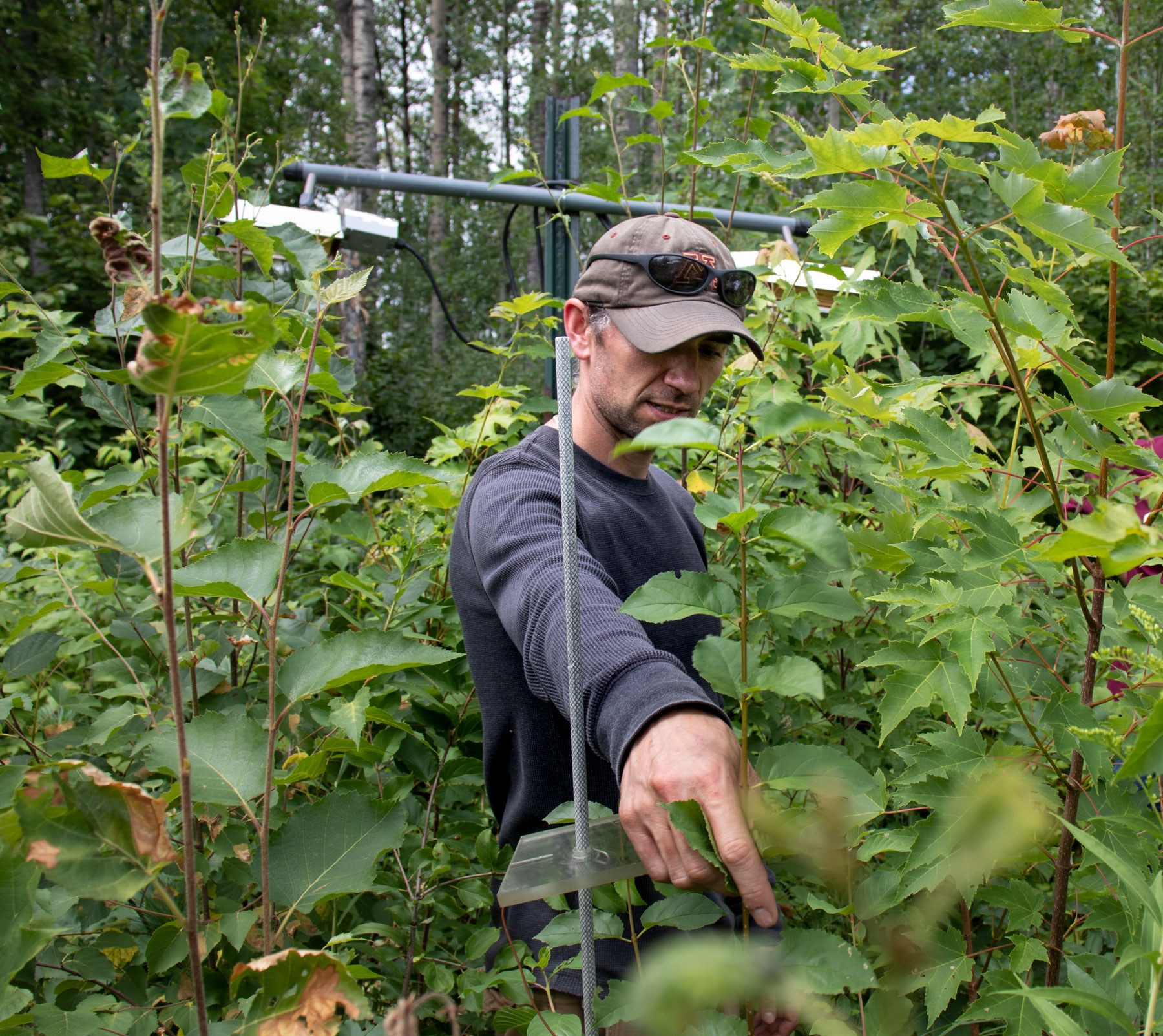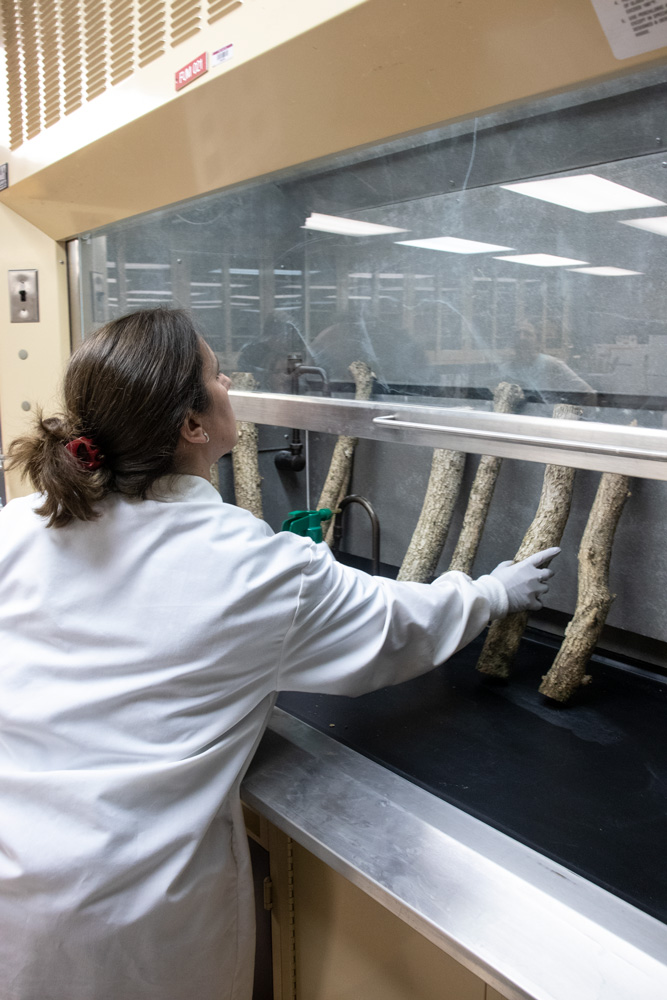MITPPC delivers science-backed solutions to protect our state’s forests, wetlands, prairies and urban green spaces.
MITPPC has committed nearly $15 million in funding to the most promising applied research projects related to the management of invasive species threats. We remain the only university-based center in the country with significant funds dedicated to research to protect our natural resources, thanks to support from the Minnesota State Legislature.
Our world-class researchers work with land managers and community partners across the spectrum, merging perspectives from lab to field. Together, we're aiming to put a stop to tough ecological threats like buckthorn, emerald ash borer, oak wilt and many others.

A long-term study of how warmer air and soils affect forest ecosystems, led by ecologist Peter Reich, is the only one of its kind in the world. Doctoral candidate Artur Stefanski demonstrates how ambient temperature is measured in an experimental plot of native and invasive woody shrubs (like buckthorn) at the Cloquet Forestry Center, Minn.
Protecting against future threats
In a rapidly changing world, MITPPC researchers are working to equip future land managers with actionable knowledge ahead of time. Their early detection efforts will be at the forefront of eradicating and controlling invasive threats for decades to come.
Our teams are monitoring the greatest invasive threats to the regional ecosystem and economy – including a dwarf mistletoe and mountain pine beetle that imperil Minnesota’s vast pine forests, and a suite of noxious weeds that threaten prairies, farms and woodlands now and in the future.
Battle over buckthorn
MITPPC is exploring the long-term benefits of goat-grazing for buckthorn management while addressing a deadly snail-borne parasite that puts goat herds at risk. At the same time, our researchers are examining how native plants can be used after buckthorn removal to prevent its regrowth and help restore the health of our forests.
Saving America's tree from oak wilt
Early detection of the invasive oak wilt fungus is critical to stopping its spread, but symptoms can look similar to drought stress and other diseases.
To help forest managers find infected trees quickly, our researchers are working at both small and large scale – developing a hand-held device for rapid and affordable diagnosis in the field, and drone technology for identifying oak wilt at the canopy level.
“It would be unbelievably tragic to lose oak trees. It's not just an iconic group of trees at stake – it’s a third of our forests. It does take effort to stop the progression of this disease, but it can be stopped.”
- Jeannine Cavender-Bares, MITPPC principal investigator

Oak wilt is a serious and often fatal disease caused by an invasive fungus. Early detection is key to stopping spread. MITPPC post-doctoral researchers inoculate oak saplings with oak wilt disease fungus as part of their experiments to improve detection in Minnesota forests.

MITPPC researchers are developing fungal biocontrol options to protect Minnesota ash trees. Plant pathology Ph.D. candidate Sofia Simeto Ferrari sprays ash logs with fungal spores to see if they can help control emerald ash borer naturally.
Stopping the emerald ash borer
The emerald ash borer (EAB) threatens an estimated 1 billion ash trees across Minnesota. In urban green spaces, ash can make up nearly half of the tree population.
MITPPC researchers are seeking to identify fungi that could kill or disable EAB as a form of natural biocontrol. They’re also exploring the possibility that selective treatment of a few trees within a population could achieve “herd immunity” for the wider area. Community partners at the city, county, state and industry level have been vital to work’s success to date.
“Biocontrol would be one more piece in the puzzle of how to slow the spread of EAB. A fungal disease that infects EAB could take the lead in moving it from a primary pest to a secondary pest.
- Phillip Potyondy, Minneapolis Park & Recration Board, MITPPC Research-In-Community Partner